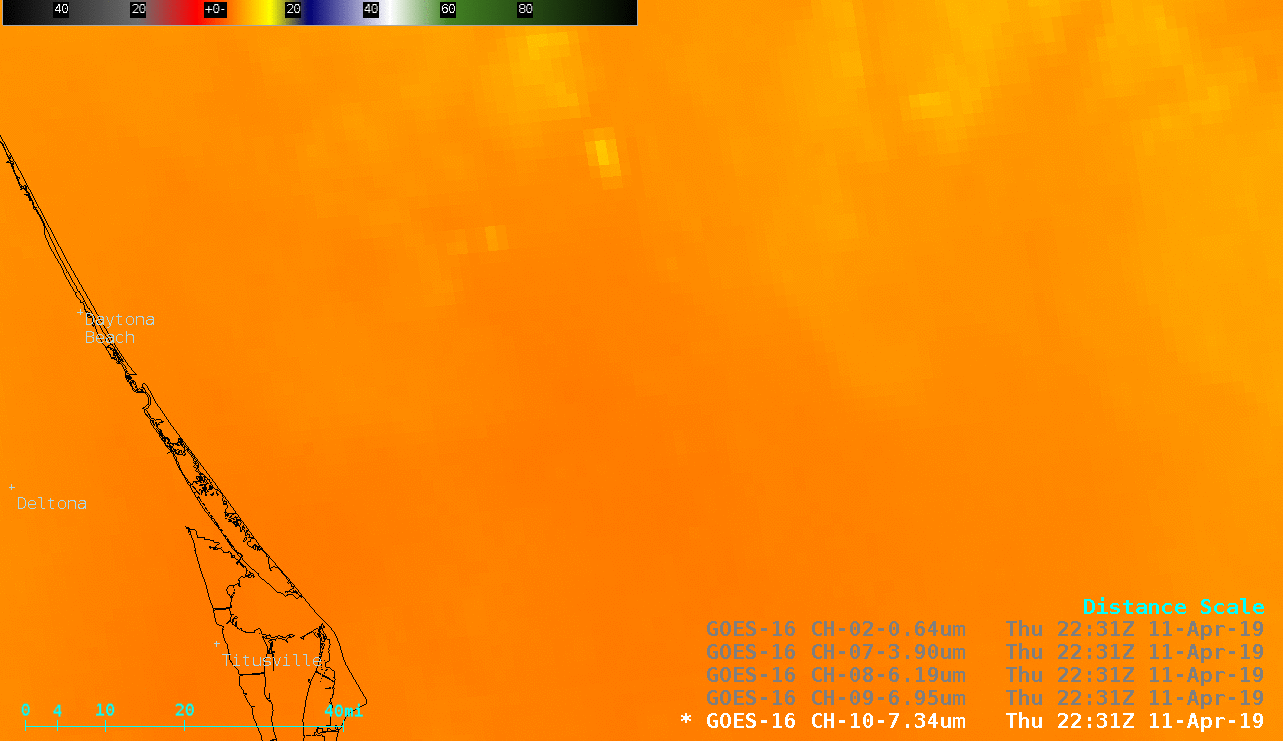Satellite signatures of a SpaceX rocket launch

GOES-16 Low-level Water Vapor (7.3 µm), Mid-level Water Vapor (6.9 µm), Upper-level Water Vapor (6.2 µm) and Shortwave Infrared (3.9 µm) images from 2231-2251 UTC [click to enlarge]
![GOES-16 Low-level Water Vapor (7.3 µm), Mid-levell Water Vapor (6.9 µm), Upper-level Water Vapor (6.2 µm), Shortwave Infrared (3.9 µm) images at 2236 UTC [click to enlarge]](https://cimss.ssec.wisc.edu/satellite-blog/wp-content/uploads/sites/5/2019/04/190411_2236utc_goes16_waterVapor_shortwaveInfrared_visible_SpaceX_rocket_thermal_condensationPlume_signatures_anim.gif)
GOES-16 Low-level Water Vapor (7.3 µm), Mid-level Water Vapor (6.9 µm), Upper-level Water Vapor (6.2 µm), Shortwave Infrared (3.9 µm) and “Red” Visible (0.64 µm) images at 2236 UTC [click to enlarge]


![GOES-16 "Red" Visible (0.64 µm) images [click to enlarge]](https://cimss.ssec.wisc.edu/satellite-blog/wp-content/uploads/sites/5/2019/04/190411_goes16_visible_SpaceX_rocket_plume_signatures_anim.gif)
![Plot of 00 UTC rawinsonde data from Cape Canaveral, Florida [click to enlarge]](https://cimss.ssec.wisc.edu/satellite-blog/wp-content/uploads/sites/5/2019/04/190412_00utc_kxmr_raob.png)